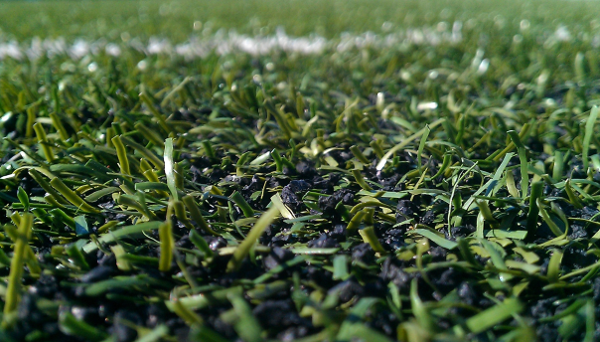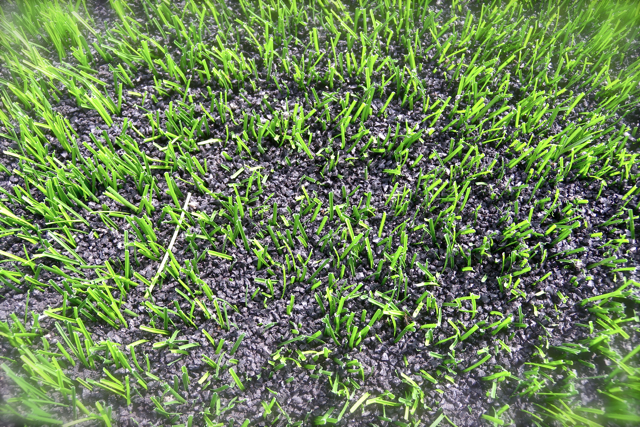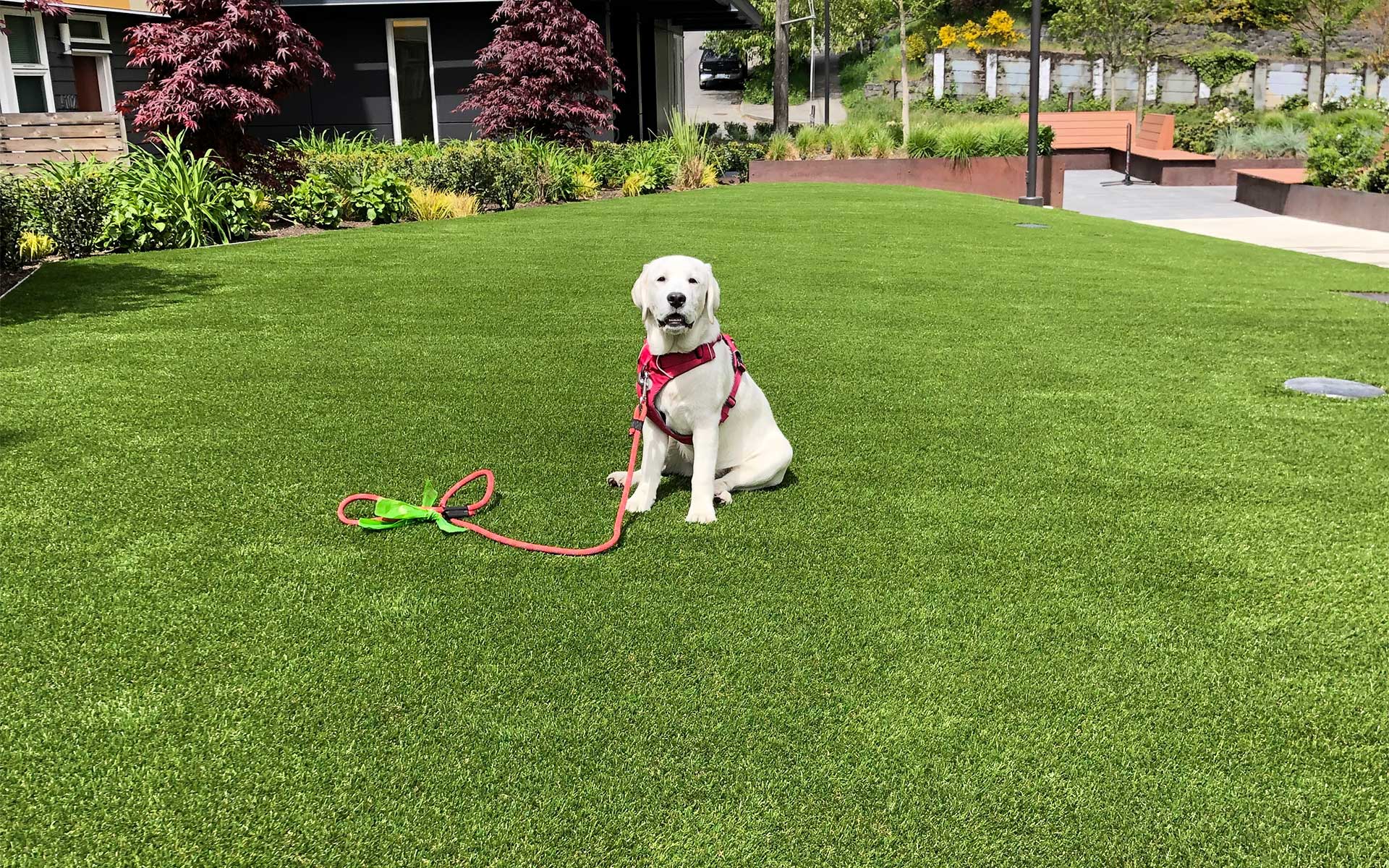Explore the Environmental Advantages of Opting for Synthetic Grass Solutions
The adoption of synthetic grass remedies offers a compelling possibility to resolve pressing environmental obstacles. By considerably decreasing water usage and reducing the application of dangerous chemicals, these alternatives not just promote sustainable landscaping however also safeguard neighborhood ecological communities.
Water Preservation Advantages
Among the most considerable advantages of synthetic grass is its capability to preserve water. Typical turf lawns require considerable irrigation, especially in locations vulnerable to drought or water restrictions. On the other hand, synthetic grass does not need watering, significantly minimizing the general need for water resources. This attribute is particularly valuable in deserts where water deficiency is a pushing problem.
By removing the requirement for normal watering, fabricated grass contributes to lasting landscape techniques and assists alleviate the ecological impact of too much water intake. The conservation of water extends to the decrease of overflow, which can lead to dirt disintegration and waterway air pollution.
Additionally, the installment of fabricated lawn permits districts and home owners to assign water resources extra successfully, focusing on vital uses such as alcohol consumption water and agriculture. The change towards synthetic grass not just advertises liable water usage yet additionally straightens with wider environmental objectives aimed at protecting natural deposits.
As areas increasingly prioritize sustainability, the water conservation benefits of man-made grass present a compelling situation for its adoption in domestic and commercial landscape design projects.
Reduced Chemical Usage
The change to synthetic grass substantially reduces the dependence on chemical therapies typically utilized in all-natural grass maintenance. Typical grass administration generally entails the application of plant foods, herbicides, and chemicals to promote growth and control parasites. These chemicals can position threats to human health and wellness, neighborhood wildlife, and the environment, adding to soil and water contamination.
In comparison, artificial grass eliminates the requirement for these damaging materials. By reducing the launch of synthetic substances into the ecological community, man-made lawn promotes much healthier soil and water systems.
Additionally, the absence of chemical drainage connected with synthetic grass installments assists shield neighborhood waterways from contamination, sustaining aquatic life and preserving biodiversity. Artificial turf companies phoenix. As areas increasingly focus on lasting techniques, choosing synthetic grass presents a feasible remedy that aligns with environmental conservation objectives. Via this shift, residential or commercial property owners can appreciate lavish green spaces without jeopardizing environmental wellness, leading the way for a more sustainable future
Lower Carbon Footprint

Additionally, the installment of synthetic grass can result in substantial water conservation. All-natural grass call for considerable amounts of water for irrigation, which not only contributes to the carbon footprint related to water removal and therapy yet also strains local water resources. On the other hand, man-made lawn needs minimal maintenance, requiring no watering, thus substantially lowering water use and its linked power prices.
In addition, the long life of synthetic grass adds to its decreased carbon effect. With a life expectancy of approximately 15 years or even more, the requirement for frequent replacements is decreased, resulting in less waste and reduced power usage in manufacturing and disposing of traditional yard choices. On the whole, synthetic grass offers a lasting choice for environmentally conscious landscaping.
Habitat Preservation
Habitat conservation is an important factor to consider in the argument over landscaping selections, especially when comparing synthetic grass to natural yard. All-natural turf yards usually need comprehensive maintenance, consisting of using pesticides, plant foods, and herbicides, which can adversely influence regional communities. These chemicals can seep into the dirt and waterways, damaging native vegetation and fauna and interfering with local environments.
Man-made turf gets rid of the requirement for dangerous chemicals, therefore protecting nearby wildlife and maintaining the integrity of surrounding environments. The installation of artificial turf can lead to the conversion of former grass locations right into even more biodiverse landscapes, such as pollinator yards or indigenous plant areas, which can support local wildlife.
Ultimately, the change to synthetic grass not just preserves water and minimizes maintenance efforts but also cultivates an extra unified connection between human activities and the all-natural setting, promoting habitat preservation at the same time.
Long-Term Sustainability
Lasting sustainability is a critical consider examining the advantages of synthetic grass over typical lawn lawns. One of one of the most considerable benefits of artificial lawn is its toughness; it can last as much as 15-20 years with minimal upkeep, whereas all-natural grass requires regular reseeding and replacement. This long life minimizes the need for consistent resources, such as water, plant foods, and pesticides, which are essential for keeping a healthy yard lawn.
In addition, synthetic grass adds to a decrease in carbon emissions associated with lawn treatment equipment. Conventional yards commonly require gas-powered lawn mowers, trimmers, and blowers, all of which add to air pollution. i was reading this Arizona turf. On the other hand, synthetic grass removes the need for such devices, advertising a cleaner environment
Additionally, the manufacturing of synthetic grass significantly utilizes recycled products, boosting its sustainability profile. As producers take on environmentally friendly techniques, the environmental footprint of synthetic grass proceeds to diminish.

Verdict
The adoption of man-made grass solutions offers significant ecological advantages, consisting of considerable water conservation, minimized reliance on unsafe chemicals, and a lower carbon impact. Fabricated lawn help in maintaining all-natural habitats by lessening land disturbance and promoting lasting sustainability through the use of sturdy materials. Collectively, these variables underscore the capacity of artificial grass to add favorably to environmental health and wellness and offer a feasible choice to conventional landscape design techniques in a progressively resource-conscious globe.
In contrast, synthetic grass does not require watering, considerably lowering the overall demand for water resources. By lessening the launch of artificial compounds into the environment, fabricated turf promotes much healthier dirt and water systems.
Additionally, the setup of man-made lawn can result in substantial water conservation. In contrast, man-made lawn needs very little upkeep, needing no watering, therefore significantly minimizing water use and its linked energy expenses.

Comments on “Durable Arizona Artificial Turf for Residential and Commercial Applications”